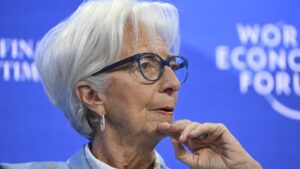ECB Rate Cuts: What Investors Need to Know in 2025
As we step into 2025, the European Central Bank (ECB) is gearing up for a pivotal meeting where the consensus points toward an interest rate cut. This move is not just about adjusting rates; it’s indicative of broader economic shifts and offers significant implications for investors. Here at Extreme Investor Network, we want to provide you with unique insights that help you navigate these developments successfully.
The Expected Shift in Interest Rates
On Thursday, the ECB is set to make a substantial decision, with money markets anticipating a cut of at least 35 basis points. If this comes to fruition, it would mark the fifth reduction since the bank began its monetary policy easing in mid-2024. Such a move would bring the deposit facility rate down to 2.75%. Market predictions suggest more cuts may follow in March and June, potentially bringing rates down to 2% by year-end.
This proactive approach to rate cuts comes despite a slight increase in inflation — a signal that the ECB is focusing on stimulating growth amidst continued sluggishness in the eurozone economy. Recent reports predict a mere 0.1% GDP growth for Q4 2024, down from 0.4% in Q3.
Diverging Economic Landscapes
One of the primary concerns investors are likely to hear about during President Christine Lagarde’s press conference is the increasing divergence between the Eurozone and the U.S. economy. While the ECB is slashing rates due to economic stagnation, the Federal Reserve maintains steadiness in its approach, with only two anticipated quarter-point cuts for 2025.
This divergence raises key questions for investors. How will U.S. monetary policy impact European markets? As inflationary pressures continue in the U.S., could a stronger dollar push capital away from euro-denominated assets?
The Currency Conundrum
The interplay between interest rates and currency valuation is another critical area for investors. Higher interest rates generally bolster a country’s currency, which could pull the euro closer to parity with the dollar—an important factor to monitor. A strong dollar could hike the cost of imports for Europe, thereby influencing inflation, even as the ECB insists it does not perceive significant risk from U.S. inflation spilling over into Europe.
However, it’s essential to delve deep into how these dynamics will unfold. A weaker euro could make European exports cheaper and thus stimulate growth, but reliance on export-led growth amid potentially escalating trade tensions could pose risks.
Trade Tensions and Economic Forecasts
The looming spectre of trade disputes cannot be overlooked. President Trump has signalled a tough stance on trade with the EU, emphasizing that America has “very big complaints” about the current trade dynamics. If these tensions escalate, they could further stall eurozone growth and lead to more aggressive rate cuts by the ECB in response.
Economic analysts from our network suggest that if proposed tariffs materialize, they could significantly spur inflationary pressures, causing the ECB to walk a fine line. On one hand, they need to support growth; on the other, they must remain vigilant against inflation.
What This Means for Investors
As we delve deeper into 2025, investors must be acutely aware of these interlinked economic factors—rate cuts from the ECB, inflation rates in the U.S., currency fluctuations, and trade relations. Here are a few key strategies to consider:
-
Diversify Across Currencies: As the euro struggles against the dollar, consider diversifying your portfolio to mitigate risks from currency fluctuations.
-
Stay Informed on Trade Developments: Monitor trade negotiations closely, as unexpected tariffs could have ripple effects on growth and inflation forecasts in Europe.
-
Focus on Inflation-Protected Assets: With inflation becoming a prevalent concern, investments in inflation-protected securities might provide a hedge against increasing prices.
- Analyze Sector Performance: Different sectors react differently to interest rate changes. A thorough understanding of sector performance can help you strategically position your investments.
At Extreme Investor Network, we pride ourselves on not only offering timely economic analysis but also providing actionable insights for navigating the complexities of the financial landscape. As we move through 2025, staying informed and agile is your best strategy for weathering the uncertainty ahead.

